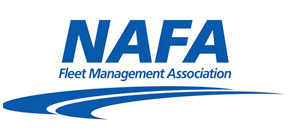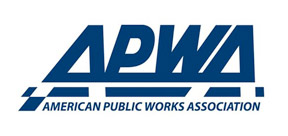Surviving the storms: Pinellas County, Fla., completes hurricane cleanup

When hurricanes Helene and Milton hit the state of Florida last fall, residents in the unincorporated areas of Pinellas County braced for the storms’ impact and the resulting damage. Like snowflakes, no two hurricanes are exactly alike, and neither is the cleanup process. However, thanks to a solid plan that could be modified to fit the need, the county could complete the debris collection by the end of January and begin preparing for whatever comes next.
Back-to-back events
According to Pinellas County Public Works Deputy Director Paul Dean, MPA, the two hurricanes were unique storm events. Not only did they make landfall within 13 days of each other, but they impacted the county in very different ways. Helene made landfall as a category 4 storm in the Big Bend region of the state, causing a coastal storm surge off the Gulf of Mexico, while Milton, a category 3 storm, brought with it the wind and rain typically associated with a hurricane event.
“When you combine two storms that hit back-to-back like that, there wasn’t an area of the county that was spared from damage,” he said. “If it had only been Helene, we could have focused on the coastal areas. If it had only been Milton with the wind and the rain, that affected more of the inland areas. But because it was both, it meant that we were doing recovery throughout the entire county.”
The volume and variety of the subsequent debris brought on by both storms was also significant. Helene’s surge caused sand to flood the streets and pile up in the hotels and condos along the beachfront properties, while also resulting in infrastructure failures and water damage that could not be remedied by the time Milton came along, bringing additional vegetation and commercial debris.
Gathering the garbage
Although the Federal Emergency Management Agency (FEMA) supports cleanup efforts in places affected by a natural disaster, incorporated and unincorporated areas in Pinellas County have their own recovery plans and work independently of each other. Prior to the storms, the county public works department designated and permitted several disaster debris management sites (DDMS) where materials could be deposited once collected.

“Looking for and finding those open areas that you can have designated as DDMS sites is a great preparation tool and the more you have, the better,” Dean said. “If you don’t have to use them or activate them, that’s even better, but I will say that due to the debris that was developed from this disaster, we ended up having to add DDMS sites so that was one lesson we learned from this storm: the more DDMS sites you have, the better.”
Using various forms of communication, including flyers, the county website, social media announcements and broadcast notifications, the county let residents know when they could place their debris in the right-of-way on the street so that it could be collected by contractors and delivered to the DDMS sites. Citizens could check online to find out who was in charge of their area’s recovery efforts and, in the case of the unincorporated areas, the status of the collection routes. Dean said that workers typically made two passes throughout the unincorporated portion of the county and arranged for additional pickups in those areas that had more damage than others.
“We also set up two citizen drop-off sites for those people who didn’t have a lot of damage and wanted to be able to load their items into a truck or trailer and be done with it,” Dean said.
Once the materials were collected, they had to be sorted by type. Vegetative debris, such as tree limbs and other natural materials, were placed into one pile while commercial and demolition debris — including drywall, fencing, siding and appliances — were placed into separate piles to be compacted and hauled away. The vegetation was ground into mulch for use by farmers and others or burned, provided that the burn pit was far enough away from residential areas and the smoke would not cause any harm. Care was also taken to ensure that those burn sites could be returned to their prior status with no lasting damage.
“Part of the FEMA process is that they want to see how everything is handled from cradle to grave as far as collection is concerned, and according to our website, it shows that we hauled away 644,953 cubic yards of debris from this event,” Dean said. “We had the vast majority of it picked up by Dec. 31, but we do have some residents who do not live here full time so we were still picking up some debris in early February.”
Because each storm is different, Dean said improving the county processes is an ongoing effort.
“You plan ahead as much as you can, but then sometimes, you have to pivot depending on how a storm plays out so we are always refining those processes, but it’s always easier to pivot rather than come up with a new plan for every situation.”
Next Article: Several cities offer e-waste collections for residents


